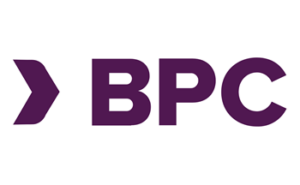 In many parts of the Asia-Pacific (APAC) region, digital wallets are no longer seen as complementary to banking, they’ve become central to it. From buying groceries at a roadside stall in Jakarta to paying utility bills through a smartphone in suburban Melbourne, the everyday use of e-wallets has quietly redefined what consumers expect from financial services.
In many parts of the Asia-Pacific (APAC) region, digital wallets are no longer seen as complementary to banking, they’ve become central to it. From buying groceries at a roadside stall in Jakarta to paying utility bills through a smartphone in suburban Melbourne, the everyday use of e-wallets has quietly redefined what consumers expect from financial services.
While traditional banking infrastructure still holds a strong presence, especially in countries like Australia and New Zealand, the way people interact with money is shifting towards a mobile-native experiences. Banks that continue to depend solely on card issuance and app-based interfaces are discovering that customers now expect, faster transactions, better integration with lifestyle platforms, and easier ways to manage finances with just a push of a button.
According to Euromonitor International, digital wallets in developing APAC countries have recorded significant momentum, with personal electronic payments growing at a compound annual rate of 43% between 2019 and 2024.
Countries like India, Indonesia, and the Philippines have become case studies in how quickly digital wallets can outpace conventional methods of transaction. The driver behind this growth isn’t just government support or technology availability, it’s how well digital wallets address longstanding frictions around access, convenience, and real-time payment needs. Even in more developed markets, wallet usage is climbing.
In 2023, Capital One Shopping reported that 50% of point-of-sale transactions across APAC were made using digital wallets, marking a significant shift in consumer behaviour. This figure is expected to rise further as mobile-native users continue to dominate transaction volumes.
Banks without wallets risk being left out of their customers’ daily financial lives
This level of penetration brings with it an important question for banks, what happens if you don’t offer an e-wallet?
For many institutions, the risks are no longer hypothetical. Banks without wallet capabilities are beginning to lose visibility in the customer journey. It’s not just about falling behind on innovation; it’s about being absent in daily moments of spending. In a competitive market filled with fintech players and super apps, not showing up at the payment moment often means not being considered at all.
Without a wallet presence, financial institutions surrender control over how customers engage with payments, rewards, and even account balances. Instead, that interaction is handled by a third-party provider, which often means losing valuable data insights that could otherwise inform product development, lending models, or personalised user experiences.
At the same time, institutions without wallet offerings often struggle to reach underserved segments.
In countries where banking penetration remains limited, digital wallets have filled a critical gap. For instance, Indonesia’s QRIS system has created a unified standard for merchants and consumers alike, making it easier for informal vendors and gig workers to participate in digital commerce. Without a comparable offering, banks have fewer levers to tap into these markets and extend services like microloans or insurance products that could otherwise be delivered through wallet-linked platforms.
E-wallets are not just a technology decision, but a strategic one
This isn’t just a technology issue, it’s a strategic one. While some banks may hesitate to deploy wallets due to concerns over integration or operational complexity, delaying implementation means missing out on the rapidly growing share of consumers who now equate e-wallets with modern banking.
Consumers who once logged into online banking platforms for daily account management now open their e-wallet apps first. As the lines blur between banking and commerce, institutions must consider what role they want to play in this evolving financial narrative.
According to Euromonitor’s 2024 data, APAC now accounts for over half of the world’s paperless financial transactions, much of it facilitated by mobile wallets. That figure alone signals how entrenched this shift has become. While banks still lead in products like fixed deposits, mortgages, and business loans, it’s clear they are losing their edge in day-to-day transactions, and with it, customer mindshare.
BPC’s SmartVista eWallet offers a practical path to digital relevance
BPC's SmartVista eWallet is addressing this shift with intent. Designed to help tier-1 and tier-2 banks, fintech, SMEs participate meaningfully in the digital payments space, the SmartVista digital platform offers a broad range of capabilities, from retail purchases and mobile top-ups to person-to-person transfers and bill payments.
“Our platform isn’t just a standalone solution, it’s built to integrate seamlessly into a bank’s existing ecosystem. This allows institutions to retain full customer ownership while meeting evolving digital demands. With a modular approach, banks can modernise without needing to overhaul legacy systems or start from scratch”, said Imran Vilcassim, Global Chief Commercial Officer, Digital Banking, BPC.
Security remains a primary concern for digital wallet users, and rightly so.
Imran states that, SmartVista addresses this with strong encryption, multi-factor authentication, and regulatory compliance baked into its design.
The wallet isn’t simply a skin on top of banking systems, it’s an operational layer that connects data, users, and transaction engines in a way that banks can control and evolve. A product sheet outlining its architecture and features is available on BPC’s official site.
Banks that want to stay relevant need to meet customers where they are
Perhaps one of the most significant advantages for banks adopting their own wallets is the ability to stay relevant across changing demographics.
A 2024 report by eMarketer reveals that nearly 80% of Gen Z consumers already use digital wallets, underscoring a generational shift in payment preferences. For financial institutions aiming to stay relevant with younger audiences, offering an e-wallet is no longer just a forward-looking investment, it’s a present-day necessity.
Banks may still hold the trust advantage when it comes to managing long-term savings and credit. However, in the world of daily finance, coffee purchases, utility bills, digital subscriptions, ride-shares, that trust is slowly shifting toward convenience-first platforms.
To keep up, financial institutions must ensure they have a real stake in the daily digital interactions of their customers. Otherwise, they risk being left behind not by disruption, but by quiet disconnection.
In APAC and ANZ, the path forward is clear. It’s not just about catching up with fintechs or expanding mobile capabilities. It’s about making sure that banking remains where people spend, save, and live, inside the device they carry every day. And increasingly, that experience begins with a wallet.
BPC


